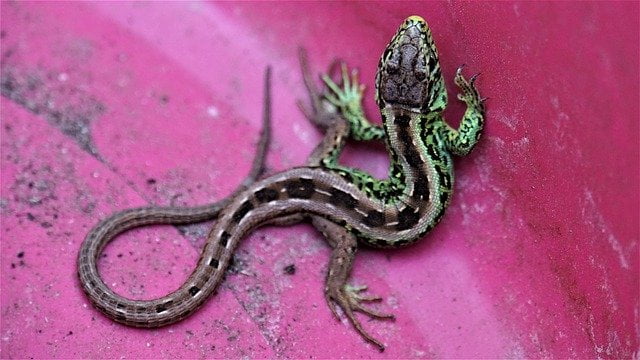You love animals? To most people yes. For this reason, many enjoy going to places where they can be seen in an environment similar to the one they usually have, such as the park, the zoo, etc. In those places it is normal to see bears, lions, penguins, different types of birds and many more animals.
But it is unlikely that someone would want to have one of these animals as a pet, since they require a special habitat and care. In fact, many of them do not survive because they do not receive proper treatment.
Are you looking for a pet animal? Among the most popular are dogs, cats, canaries and rabbits. However, there is a group of people who finds conventional pets boring. For this reason, they bet on others that not everyone would dare to have in their home, such as snakes, spiders, Vietnamese pigs, etc.
Would you like to have a pet of this type, but do not know which one to choose? If the answer to this question is yes, don’t let the parrot go! A magnificent, eccentric and unconventional pet is the salamander.
Do you know this animal? Its appearance is similar to that of a lizard, although a little slimiest. However, because it is a very peculiar animal, it requires special care so that it does not die and you can enjoy it for a long time.
If you want to have a salamander as a pet at home, you have come to the right place. Here you will find out everything you need to know to properly care for a salamander, which involves providing it with an appropriate environment, feeding and drinking it, preventing the presence of pests and diseases, etc. After reading this article, you will want to have a salamander in your house today.
Instructions for caring for a salamander
Although its appearance is similar to that of a lizard, the salamander is an amphibian that has nocturnal habits. It reaches between 18 and 25 cm in length. It has four legs with toes on them. Their skin is slimy and they have toxic glands that they use as a defense weapon against their predators.
One of the greatest curiosities of the salamander is its ability to regenerate its body. He can regenerate any of his limbs completely. But it can also regenerate vital organs, such as the heart, the eyes, and even the brain. However, this regeneration process can last their entire life.
If you want to have a salamander as a pet, it is important that you take into consideration the following instructions:
- Provide a natural habitat that can meet its biological needs. In this case, a terrarium is the best option. In order to condition it, place coconut fiber or moss substrate on the bottom.
- Depending on the type of salamander you have, it may need to be provided with an aquatic, semi-aquatic, or terrestrial environment.
- On the other hand, it is important that you create hiding places for them, since they become stressed very easily, so it is ideal that they have several places where they can relax. You can use rock caves, large pottery shards, bark chips, and some store-bought caches.
- If your salamander is terrestrial, you must provide it with water. You can do this with the help of a container. It should be small and shallow, since land salamanders are not known for being good swimmers and can even drown if the container is too deep and they fall into it.
- Make sure it has the temperature it needs. This will also depend on the type of salamander you have. Those with a temperate climate will not need any type of heating, those with tropical and semi-tropical climates will.
- Give him a balanced diet. Salamanders are carnivorous animals that like to hunt their prey. Hence the importance of feeding them prey that is alive. If you buy dead prey, make sure they are frozen.
If you notice that he does not eat everything you have served him, it is likely that he has already had his fill. Remove any live prey, as if you don’t, they could end up biting and disturbing your salamander.
What do you need to take care of a salamander?
- The terrarium or aquarium. When selecting one, make sure it has enough room for your new pet to walk, climb, dig, hide, or do whatever it wants.
- Make sure the tank has a well-fitting lid. Keep in mind that salamanders are very agile animals, excellent climbers that can climb the walls of the tank.
- Mesh tops are the best, as they allow them to have enough ventilation.
- The temperature. To provide the temperature it needs, you can use different objects, such as an aquarium water heater, a heating pad, a heat lamp, etc.
- The water. This must be filtered. You can give him tap water, but it must have been previously treated to remove chlorine and chloramine. You can also use spring water.
- The food. As we have already mentioned, it is best to offer live prey. Some of them can be earthworms, worms that are used as bait for fish, crickets, mosquito larvae, slugs, etc. You can get this type of food at pet stores.
As you have been able to realize, you do not need many elements to provide your salamander with an environment where it can live happily. But, what recommendations should you take into account regarding her care?
Tips for caring for a salamander
Although her cute appearance invites you to want to grab her, touch her or pet her, resist the urge. The oils that naturally secrete from the hands of human beings can make salamanders sick.
At the same time, they can carry or create secretions that can be harmful to humans. What allows us to see that the most advisable, for both parties, is that you try to manipulate them?
If you have to do it, either because you are going to move her or because she is sick, wash your hands very well with hot water and soap. Also, make sure you get all the soap out. This will be very useful in preventing diseases.
Since salamanders are nocturnal animals, it is best to feed them at night, as this is when they are most active. You can set an alarm so you don’t forget to feed it.
Feed him only two or three times a week. You may not eat for the first few days in your new home. These animals get nervous very easily and it takes them a couple of days to adapt to a new environment.
Of course, this will depend on the type of salamander you have and its personality, since there are others that feel comfortable and eat vigorously from the very first day.
If your salamander is very young, be sure to feed it daily until it has stopped growing and is a healthy adult. The amount of food will depend on the space or capacity of your stomach. There are species, such as the tiger salamander and the fire salamander that can become obese if you feed them too much.
Do not put any objects with pointed ends inside your aquarium or terrarium. This can eventually pierce the salamander’s delicate skin.
Keep in mind that these animals love damp, boggy and shady places. However, you should make sure to clean your home once a week. When you do, wear gloves and put it in a safe place while cleaning.
Wash the inside of the aquarium, as well as all the objects inside it, with hot water and make sure to dry them well before putting them back inside. If you do it this way, you will enjoy your salamander for a long time.















